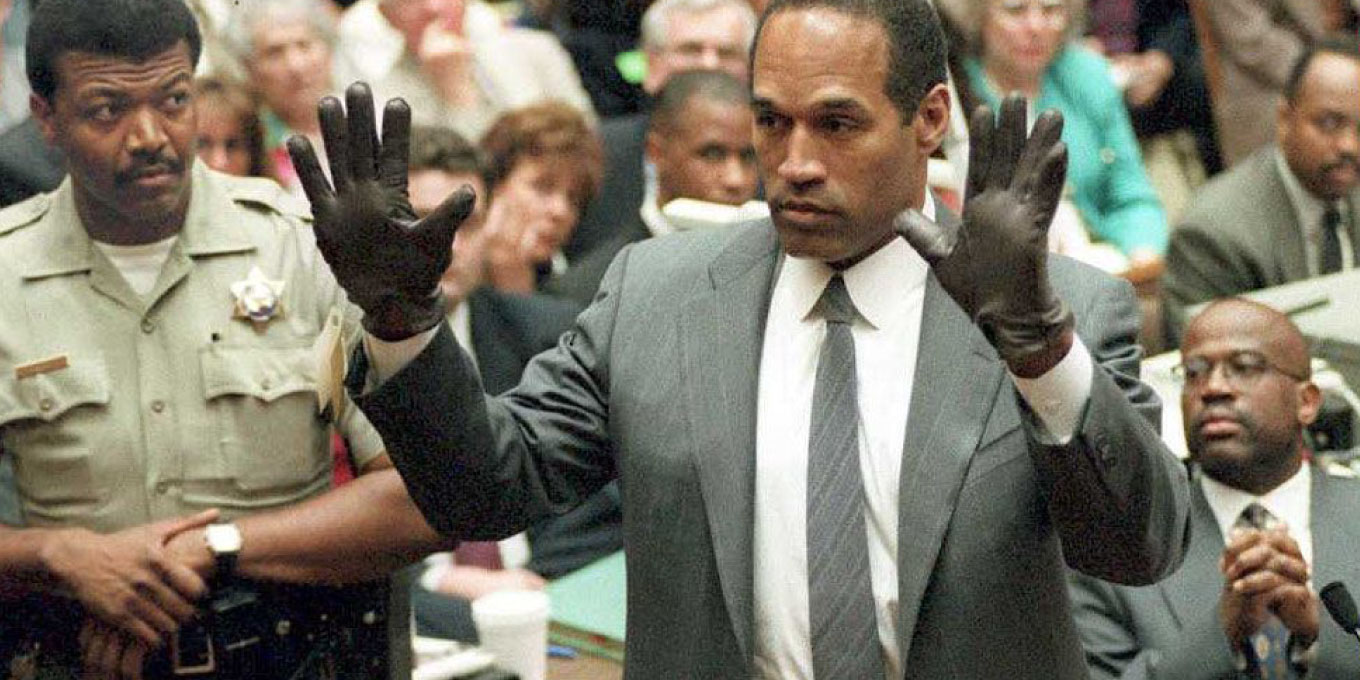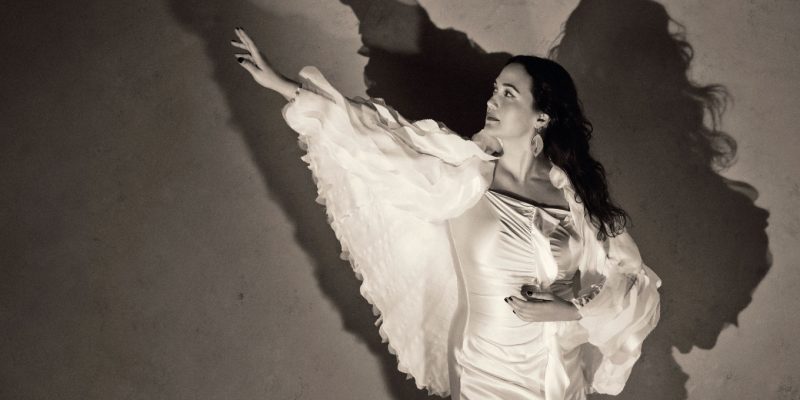Society
Why Are We So Obsessed With True Crime?
Avid interest in true crime is nothing new, but experts are questioning whether it’s a healthy habit.
by : Caitlin Stall-Paquet- Mar 19th, 2024

Getty Images
I was six years old when I saw a picture of Nicole Brown Simpson on the front page of the Montreal Gazette. It was June 13, 1994, the day after her murder, and I was both confused and entranced by this beautiful blond woman who was now dead. What I didn’t know then was that she would become my “patient zero.” Most true-crime lovers encounter a case that first gets their Sherlock Holmes-wannabe brain spinning, and this was mine. My love of things that lurk in the shadows has only grown since then—attracting me to stories about the worst things people can do and pushing me to read stacks of murder mysteries and horror books—but it’s a love that has gone unexamined for a long time. Recently, though, it has become clear that our frenzied consumption of true crime as entertainment stokes our fears, boosts our paranoia and skews our perception of who experiences violence while also emboldening some to become armchair crime solvers who occasionally—for better or for worse—affect real investigations.
Though the genre dates back to at least the 19th century, with the infamous unsolved case of Jack the Ripper—who murdered sex workers in Victorian London—the rise in popularity of the podcast format has made these stories more consumable than ever. Our appetite for true crime can now be fed with easily digestible hour-long instalments, and today, the amount of media that dives into old or cold cases has exploded. Since the wildly popular NPR podcast Serial—which details the 1999 murder of high-school student Hae Min Lee, of which her ex-boyfriend Adnan Syed was convicted and sentenced (Syed has maintained his innocence throughout, and he was released from prison in late 2022 before his conviction was reinstated in 2023 in an ongoing legal battle)—was released in 2014, the true-crime genre seems to have become part of the cultural zeitgeist. Four of the 10 most popular podcasts of 2022—including one that sucked up plenty of my own time and attention, the hit series My Favorite Murder—were about true crime. And I’m not the only woman getting caught up in these captivatingly grim stories—series like MFM and Crime Junkie are often directed at female audiences. A 2022 survey by the Pew Research Center showed that in the U.S., women are nearly twice as likely as men to be regular podcast listeners. They also make up 61 percent of listeners of the genre’s top 25 podcasts.
In 2010, Amanda Vicary, now a psychology professor at Illinois Wesleyan University, posited that women are more attracted to the genre because they feel vulnerable to the violent crimes it depicts. Behind so-called “iconic” serial killers turned pop-culture obsessions—the Ted Bundys of the world—are often gruesome tales of men (according to the 2019 UN Global Study on Homicide, approximately 90 percent of murders worldwide are committed by men) preying on young middle-class white women. Though we might believe the media-pushed narrative that the typical murder victim is a pretty twentysomething blonde, the stats tell a different story altogether. Globally, 78.7 percent of murder victims are men, often through events like gang-related or gun violence. But countless studies show that women still fear being the victims of deadly crime more than their male counterparts, in part because we are much more likely to suffer from domestic violence. (More on that later.)
“So is our attraction to true crime an act of information-gleaning to anticipate danger or an interest in the macabre?”
As you might suspect, tuning in to stories of girls getting murdered isn’t soothing anyone. Vicary is currently conducting a study in which she has male and female participants listen to 20 minutes of a true-crime podcast; her early findings show that women disproportionately experience substantial increases in anxiety afterwards. So is our attraction to true crime an act of information-gleaning to anticipate danger or an interest in the macabre? Professor Jooyoung Lee, who teaches about gun violence, health inequality, hip hop and true crime at the University of Toronto, says the gory hobby contains a healthy dose of the latter. “We like to be sort of voyeurs [of] tragedy and to observe terrible things happening to others from a safe distance,” he says.
However, Vicary thinks our fascination with doom and gloom can have upsides too, as her teaching has turned toward exploring potentially wrongfully convicted people, an area where sleuth communities can be useful—like with Serial’s Syed. Though we can’t be certain about why Syed’s tides turned or whether he will go back to prison, Vicary doesn’t believe attention would have been brought back to this decades-old case without the public eye being focused on it as well as people from the University of Virginia School of Law’s Innocence Project working on it.
For some fans, this involvement in communities of online sleuths can veer toward obsession. What might seem like a noble endeavour can take a dangerous turn, as with the quadruple murder at the University of Idaho in November 2022, when four students were fatally stabbed and amateur detectives quickly started looking for a culprit. They took to Reddit and TikTok, accusing innocent people of the crime and ultimately leading to great distress for the falsely accused, a defamation lawsuit and attention being pulled away from the actual case.
Before podcasts took over our ears and brain space, Michelle McNamara was ahead of the sleuthing trend with her 2006 blog, True Crime Diary, eventually becoming an extreme example of the grip these cases can have. The writer focused her interest on the cold case of a cross-California serial killer and rapist she nicknamed “the Golden State Killer.” In her book, I’ll Be Gone in the Dark, McNamara details her obsession with tracking him down and the hours she spent poring through police reports in light of new technology: forensic genetic-data comparison through genealogy databases. The first half of the book ends abruptly; on April 21, 2016, McNamara died in her sleep from an accidental overdose of prescription drugs she was said to have been taking to cope with the stress caused by her search. Two years later, former police officer Joseph James DeAngelo Jr. was charged with and ultimately convicted for 13 murders “with special circumstances.” (He couldn’t be charged with the dozens of rapes he was tied to as the statute of limitations had passed.) McNamara had worked closely with the case’s detective, Paul Holes, and was an early proponent of using DNA databases like the one that led to the arrest. She vowed to find the perpetrator, and her mental and physical health paid the price.
The Brown Simpson case sunk its claws into many imaginations, but this type of high-profile case is an outlier. Although O. J. Simpson was infamously acquitted, his trial shone a light on a reality of homicide: 82 percent of murdered women and girls are killed by an intimate partner, according to the UN. However, its very commonness means femicide rarely makes the news (unless celebrities are involved), let alone gets covered in nail-biting televised trials. The majority of women killed are vulnerable, as demonstrated by a 2018 analysis of a U.K. murder database, which revealed that sex workers are 12 times more likely to be murdered than other women. In Canada, Indigenous women made up nearly a quarter of women’s homicides between 2015 and 2020 even though they only make up 5 percent of the female population. In her acclaimed CBC podcast Missing & Murdered, investigative reporter Connie Walker does a deep dive on this often ignored subject.
There’s a passage in McNamara’s book that beautifully weaves fact and fiction together, and it has stuck in my brain— like that photo of Brown Simpson. She compares her relationship to the Golden State Killer to a scene in the 1954 horror movie Creature From the Black Lagoon, in which the main character, played by Julie Adams, is unknowingly swimming—in an iconic white bathing suit—just above the monster, which is lurking in the dark water. While reading the book, I was tempted to yell at McNamara to stop her obsession—to look down and see the monstrous man turned myth leading her to drown. But I was just another spectator enraptured by her car crash. I have since started choosing my true-crime content more wisely, looking for stories in which humanity, rather than monstrosity, shines through—like the HBO documentary series based on McNamara’s book. Turning off easily consumed true crime is a bit of a double-edged sword—the quiet gives my nerves a break, but I realize that, as Lee expressed, being able to hit stop, go back to my life and leave the monsters safely behind was part of the joy all along.
Newsletter
Join our mailing list for the latest and biggest in fashion trends, beauty, culture and celebrity.
Read Next

Beauty
The Best Met Gala Beauty Looks Of All Time
From Taylor Swift's 'Bleachella' era to Rihanna's iconic 2011 braids, meet the best beauty moments in Met Gala history.
by : Katie Withington- Apr 26th, 2024

Culture
Benny Blanco Says He Fell in Love With Selena Gomez Without ‘Even Noticing’ It
Allow Benny Blanco to tell the straight-from-a-rom-com story of how he realized his feelings for his girlfriend and longtime friend.
by : Alyssa Bailey- Apr 26th, 2024

Beauty
Tested and Approved: Your New Hydrating Skincare BFF
This new product has all of your skin’s thirst-quenching needs covered.
by : ELLE Canada- Apr 17th, 2024




